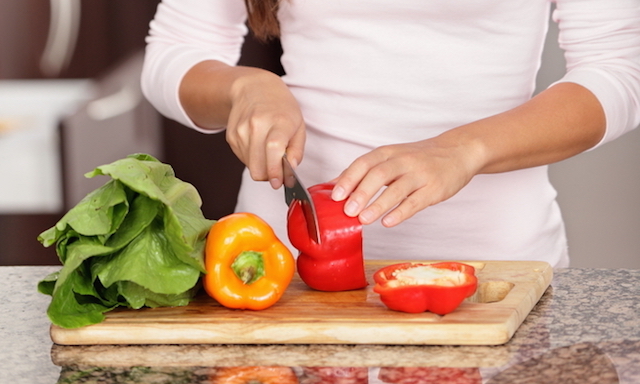Do you feel in awe on seeing a perfectly diced onion and a carrot that has been beautifully julienned? Cutting vegetables properly isn’t difficult if you can learn the skills. It’s one of the easiest skill that will help you manage your time in the kitchen while preparing you will look like a pro. We have outlined a few little points below.
Do you need Knives, and how many?
It’s amazing how many different types of knives there are on sales for all types of food you need to prepare. You’ll see, paring knives, filleting knives, utility knives, tomato knives etc. what are their benefit, and do you really need to get them all? The short answer is: unless you have been trained as a chef, you don’t need them all really.
In most kitchen drawers, you’ll find a selection of knives, and probably only one or two that you use daily. The tip here is cut down on kitchen clutter, get the best knife possible for the job.
As a good suggestion, a good quality 20cm (8 inches) Chef’s Knife (also called Cook’s Knife) will suit vegetables cutting and all cooking purpose during food preparation. This knife is made of either stainless steel or carbon steel. Knives made of Stainless steel are easiest to take care of but should be frequently sharpened On the other hand, knives made of Carbon steel have a sharper blade; this type should not be used in the dishwasher and it should be cleaned and dried after each use. It’s a personal preference while choosing your choice of knife; you need to make sure it feels right in your hand – so take your time choose wisely.
The Japanese Traditional Santoku vegetable knives and Chinese cleavers are now very popular in the Western world and with good reason. Precision forged Oriental carbon steel knives are not only unbelievably versatile, their product is always beautiful, many cooks treat their chefs to a special knife like a samurai sword..
Keep it sharp
If you’ve ever watch Dinner Dates contestants on TV hacking at a bell pepper or wonder how they don’t sustain an injury while bluntly blundering their way through a butternut squash, then you will comprehend the benefit of having a sharp knife.
Of course, all newly purchased knives cut smoothly which is why they’re so easy to use with joy. Unlike your vegetable knife, it needs to be kept sharp at all times to maximize its functionality and effectiveness. A sharp razor blade will slice through ingredients safely and with care, reducing preparation time thereby giving you a truly professional result.
Spend money on a pull-through sharpener or a sharpening steel and use them regularly to sharpen your knives. Or, try the old style of Grandma’s trick and sharpen your knife against the rough edge of an upturned china cup or piece of crockery before and after each use. It certainly works!
Chop on wood to keep your knife sharp
Steel with delicate blades need to be treated gently – which is easier said than done. If you want your favorite knife’s blade to last long, a wooden chopping board is recommended.
Softwoods like pine are a cheaper option than maple, walnut, cherry and other hardwoods. Wooden end grain butcher’s blocks are nice and heavy and won’t slide around.
Practice the ‘rolling chop’ technique
Finally, it’s time to get the chopping knife. Take your Chef’s Knife and grip it by the handle as if you were shaking hands with it. Put your index finger near the top and side of the knife rather than on the back of the blade or the bottom of the handle. Hold the vegetable you’re about to cut (tip: start with a carrot or piece of cucumber) with the other hand, forming a claw so that your fingers and thumbs are turned inward and safely away from the sharp blade.
Hold the knife blade against the knuckles of your first finger joint and press downwards to start cutting. Keep the tip of the knife on the chopping board at all times as you start ‘roll chopping’: Push the blade down and forward so it moves through the food rather than straight down onto the board, then lift just enough to go again.
As you chop, pull your claw grip back along the carrot, cucumber or whatever you’re cutting. That way, you’re always in control of the vegetable while keeping your fingertips safe from the sharp blade. Start slowly at first until you are confident enough to build up speed.




Leave a Reply